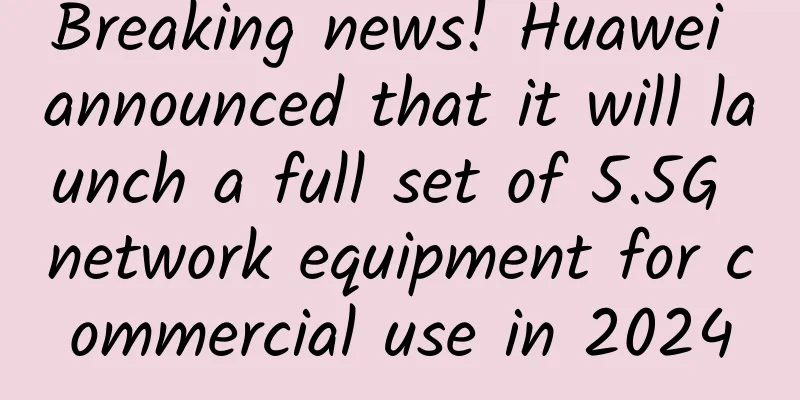White label revolution, fighting together to carve out a bloody path

|
In recent years, the hottest topic in the network industry is open networks. As a technology leader, Google first introduced the concept of white-label switches, and the white-label technology in the United States has entered a period of rapid development. Domestic white-label technology is also being discussed in full swing, but there is still a certain distance from being transformed into productivity. This article hopes to understand and think about how to truly build a white-label ecosystem in China and promote the development of white-label technology in China by focusing on the differences between open networks in China and the United States.
MSDC: Money and willfulness, good timing, good location and good people There is a very awesome company in the United States called Google. The biggest feature of this company is that it is rich, so it has built its own data centers all over the world. Google's network is divided into the internal network of the data center (IDC Network) and the backbone network (Backbone Network, also known as WAN network). Google uses a large number of Juniper/Cisco routers to interconnect in the WAN network. As Google's business grew rapidly, it spent a lot of money to purchase bandwidth to meet peak demand, but the bandwidth utilization was insufficient because commercial routers usually used a primitive method, static hashing, to load-balance traffic. So Google approached Juniper/Cisco, hoping that the manufacturer could provide an API to allow Google to plan traffic in detail according to its own wishes. Juniper/Cisco felt that this was a customized and non-universal requirement, and that it would cost a lot to implement these extremely flexible functions on the current huge router operating system, so they were unwilling to do it. Google thought about it and thought, what does it need to transform the WAN network? It is nothing more than switch hardware and switch software. The hardware is simple, and there are many ODM manufacturers in Taiwan that can produce it. The upper-layer software of traffic planning is very simple for Google. The only technology it lacks is to issue traffic planning on open switches. With money, Google recruited a large number of senior engineers and launched the B4 project. Most of these engineers are core members of Cisco/Juniper. They are very arrogant, "I make switches, the requirements are clear, and they must be better than Cisco." The core of the B4 project is the self-developed switch operating system, controller, and hardware mass production through mature ODM. The device is placed before the commercial router, and the traffic is carefully planned through the OpenFlow protocol to improve the bandwidth utilization of the WAN export. The B4 project is very successful. It is said that the link bandwidth utilization has increased by more than 3 times, close to 100%, and because of the fine control of each flow, it is also possible to clearly understand what is happening in the network, including monitoring and alarming. According to Google, it exceeded its initial expectations. Google has tasted the sweetness of self-development and has a strong switch R&D team, so it naturally thought about how to transform the internal network of the data center (IDC). What is the difference between IDC and WAN? WAN only needs to plan traffic through OpenFlow. The main requirement of IDC at that time was to support the second-layer and third-layer network business models, which seemed to be very close to the feature set of commercial routers. However, the difference is that Google's self-development faces only one customer, only itself, and the requirements are very clear. But commercial switch manufacturers need to cover the needs of all users and need to be large and comprehensive. Google launched the Jupiter project. The core of Jupiter is actually how to use white box switches to support the architecture of a large two-layer data center network. From the perspective of switches, OpenFlow is still used as the management plane and controller docking, abstracting the IDC and WAN into a network at the upper layer, so that the destination of traffic is clear at a glance. The internal switches of IDC do subtraction in feature integration to ensure the development cycle and quality. The switching chip forwarding still uses FDB and routing tables to maximize the capabilities of the switching chip. The Jupiter project was very successful and became Google's fifth-generation data center architecture. Google's success gave birth to the white-box switch market in the United States, or more precisely, the bare-metal switch market. Google is rich and willful, investing a lot of R&D resources, hiring senior engineers from Cisco to invest in its own research. Juniper/Cisco's unwillingness to lower its status can be said to be the right time, and its possession of the world's largest data center can be said to be the right place. The pride and super R&D capabilities of the senior engineers from Cisco hired by Google can be said to be the right people. With wealth and willfulness, Google has also taken advantage of the right time, right place, and right people, and has opened up a trend of the booming development of open networks around the world. American Business Network: Selling dog meat under the guise of selling sheep meat From Google's success, a group of visionary people saw business opportunities. Could we make an open switch software and become a switch software company similar to Microsoft? Based on this consideration, JR Rives left Google and founded Cumulus. Cumulus aims to be an open source, Linux-based switch operating system, hoping to become Google's MSDC. Amazon's cloud services have an absolute monopoly in the world, so Amazon also has a demand for white-label switches, and the two companies hit it off. Amazon soon mastered the technology of white-label switches, and Cumulus also gained enough reputation in the industry. Cumulus began to shift its focus to the enterprise network market, targeting financial institutions on Wall Street. One characteristic of these people is that they have strong technical capabilities and are particularly fond of new technologies. They embraced this technology that changed the operation and maintenance habits of IT personnel in generations of enterprise networks, and switched from the command lines of different switch manufacturers to the standard server Linux operation and maintenance method. But people on Wall Street have another habit, which is that they are lazy and like novelty, but they prefer someone to do all the dirty work behind the novelty. Cumulus has completed a highly innovative switch operating system, but it cannot support the entire white-label industry chain, including channels and operation and maintenance services, on its own. Cumulus's way of survival is to use the sheep's head of open source operating system to sell the dog meat of its own switches. After HP acquired 3Com, it occupied 10% of the global enterprise network market, second only to Cisco. The white-label market was becoming more and more popular, and HP immediately seized this market opportunity and joined the white-label camp. Under the CTO office, the OPS (Open Platform Switch) project was established to complete the open switch operating system. However, HP's purpose was very clear: to bring enough market influence and promote the sales of enterprise network switches to compete with Cisco. White-label is a means, not an end, and it is also a wolf in sheep's clothing. US operators: learning from others Operators have higher requirements for cost control than enterprise networks. Operators are happy to embrace change, start investing in open networks, and establish projects such as CORD and SD-WAN to reconstruct operator networks. The characteristics of American operators are somewhat similar to those of Google, and they also have very strong R&D capabilities, but the needs of network services are quite different. SD-WAN is essentially the same as Google's DCI. It is a long-distance transmission that hopes to flexibly dispatch traffic based on link quality and link latency. Operators have begun to gradually apply it by plugging in white-label switches. However, the internal network of operators and the network of end users are far more complex than the industrial chain of data centers. Optical access equipment, PON equipment, dedicated line services, etc. all need to be integrated, which is not as easy as subtracting from the data center network. How to better integrate the industrial chain is a difficult problem, and the future is still unclear, but American operators have at least begun to learn from others. In recent years, the white-label market in the United States has developed rapidly. Google has money and willfulness, and it has the right time, place and people. Bare-Metal is very successful. In addition to white-label technology, enterprises also need channels, services and other supporting industrial chains. At this stage, everyone is in a situation of selling dog meat under the guise of sheep. Operators are very complex at the technical level, and it is even more difficult to do subtraction. They are currently in a state of learning to walk by imitating others, and moving forward slowly. But overall, the white-label market in the United States is still booming. It has become the biggest change in the switch market in decades. Bare-Metal switch has become an important and indispensable member. MSDC in China: Oranges grown in the south of the Huai River are oranges, while those grown in the north of the Huai River are tangerines. The development of open networks in China is different. The major players in China's data centers are BAT, which corresponds to Google in the United States. They also occupy the right time. The rapid development of the network requires changes and more flexible and effective scheduling. China's soil is different from that of the United States. It has a large amount of human resources. Huawei H3C's rapid development also requires more market support and advanced technology support. They are willing to make changes for BAT, willing to provide more open interfaces, and make BAT their benchmark. Therefore, China's MSDC white-label market has lost its "geographic advantage". Huawei H3C's super execution and service make BAT have no motivation to do white-label. After BAT had the R&D backing of Huawei H3C, their strategies for attracting talent were also different. They tended to choose network architects and pre-sales personnel from Cisco, who were extremely sensitive to technology and had very strong judgment and foresight. They helped BAT to select products and build advanced network architectures. This also caused China's MSDC white-label market to lose "people and harmony", and the talents focused on different angles, focusing on products rather than R&D. Under these circumstances, BAT is rich but not willful, and has not invested a lot of money to form a fancy R&D team to invest in the R&D of white-label switches. This is the most effective choice under the current domestic situation, which has led to the slow development of the domestic bare-metal market. China Enterprise Network: When the nest is overturned, no egg is left unbroken If domestic enterprise networks want to go white-label, they also need to solve three problems: switch operating system software, channels, and support. Switch operating system software is a big problem in the domestic environment. The domestic general software environment is not good, piracy is rampant, and people are not used to paying for software. Only when they buy a real switch do they feel that the money is not wasted. CCTV often advertises that the cost of an iPhone is only a few hundred yuan. In such an environment, no company has the courage to focus on switch system software. It is even more difficult to have channels and support in China. Huawei, H3C and ZTE are all engaged in bloody battles on the domestic corporate Internet, and there have even been cases of winning bids for zero yuan. It is very difficult to survive as a channel in such an environment. Dell and HP provide some support and channel services in the United States, but their domestic strategies are also very clear. They focus on servers, stay in a corner, and don't get involved in switches. The three elements of software, channels and support are all missing, which leads to very few domestic players who are not really good at selling products under the guise of selling good ones, and the white-label market for enterprise networks is not optimistic. Operators: Drinking poison to quench thirst The domestic operator market is aware of the beauty of SDN technology, but operators are currently overly dependent on super-large suppliers. In many cases, they no longer make demands on equipment vendors, but use whatever equipment vendors provide, and they also do not have strong R&D capabilities. A certain company provides white-label solutions such as APIs to operators, but the entire solution from switches to controllers to APPs has technology, but it is not open technology, which makes the industry development more closed. Domestic operators have accumulated network technology for many years and understand the problems that will be caused by the current super-large suppliers. However, it is very difficult to reverse the current situation at the current time point, so even though they know it is a chronic poison, they can only drink poison to quench their thirst for the time being. It can be seen that the white-label market in China and the United States are different. Domestic data centers have the right time, but not the right place and people. They have money but not enough to be willful. Enterprise networks lack software, channels and support. The operator market is heavily dependent on super-large suppliers. Overall, the white-label market in China is still lagging behind the US in these three areas. Keep warm together, the countryside surrounds the city The key to the victory of the Chinese revolution was the strategy of surrounding the cities from the countryside proposed by Chairman Mao. The same is true for the revolution of white-label switches. MSDC, enterprise networks, and operators are essentially subject to super-large equipment suppliers, and the development of white-label switches is slow. The road to revolution still needs to start with the alliance of innovative manufacturers, jointly build a white-label ecological chain, slowly penetrate, gradually land, compete with and influence super-large equipment suppliers, and finally realize the future of open white-label switches. The white-label ecological chain that surrounds the city from the countryside includes innovative solutions, open chip providers, open switch operating systems, and open switch hardware. Private cloud and SD-WAN are two typical innovative solutions. Domestic enterprises generally lack trust in public cloud. Private cloud makes data more secure. The open Openstack cloud solution is widely used and has begun to take shape. SD-WAN is used to complete the data center interconnection of private cloud. It uses the standard OpenFlow interface to manage switches and has also been maturely applied. The problem with these innovative solution providers is that they are not large enough at present and cannot get support from mainstream equipment vendors in all aspects. The switches they buy are very expensive, resulting in weak solution competitiveness. Equipment businesses will not customize development needs for them to jointly complete solutions. Therefore, they have clear and rigid requirements for white-label switches, reasonable prices, and customized development needs. Reasonable prices and customized demands require chip manufacturers at the root of the industry chain to be open enough, willing to offer reasonable prices, willing to open more chip interfaces, and willing to invest R&D resources to design more flexible architectures. Only the openness of chip manufacturers can ensure that the white-label industry chain has a solid foundation. Open, mature and stable switch hardware is an important part of the white-label industry chain. There are already some mature ODM manufacturers in China. Their hardware solutions have been maturely applied in many fields. The open switch hardware design has passed the review of the OCP community and is active in the ODCC community. With innovative solutions to solve demand problems, open chip manufacturers and switch hardware manufacturers, the only missing link in the industry chain is open switch operating system software. HP's CTO Office launched the open source switch software OpenPlatformsSwitch last year, which caused a sensation. Its advanced data-driven concept, the use of the standard open Linux platform, and the Quagga protocol stack once gave everyone hope. But HP withdrew from the project not long ago and handed it over to SnapRoute. How long OPS can last has become a question mark again. With the solution, open switch chips, open switch hardware, and open switch software, the white-label industry chain has formed a closed loop. The future of domestic white-label products requires innovative manufacturers to form an alliance, work together, and use the strategy of surrounding the city from the countryside to complete this revolution of white-label switches in China! About the author: Cheng Wei, born and raised in Centco, works as a system engineer manager with nearly 10 years of experience in innovative software architecture. Currently, he focuses on the technical needs of cutting-edge network switching chips. |
<<: Will NB-IoT be eliminated? What is the value of connectivity?
>>: Operators dig into the Internet of Things: IoT strategic transformation in four steps
Recommend
China Mobile added 16.65 million 5G package users in May, totaling 222 million
[[406533]] China Mobile recently announced its op...
Huawei's Shi Yaohong: The new infrastructure focuses on "foundation" to enable intelligent upgrades in thousands of industries
New infrastructure (i.e. new infrastructure const...
Stop praising 5G!
On January 17, Huawei founder and CEO Ren Zhengfe...
When you "ping", do you know the logic behind it?
[[262430]] When we encounter a network outage, we...
Bharti Airtel, Ericsson trial 5G network in rural India
Indian telecom operator Bharti Airtel and Ericsso...
"All-optical wireless starry sky" illuminates the road of intelligent manufacturing of Jinya Electronics
With the advent of the fourth industrial revoluti...
Banwagong: Los Angeles CN2 annual payment starts from $46.5, 1-10Gbps US CN2 GIA/Hong Kong CN2 GIA/Japan CN2 GIA
Bandwagonhost VPS was founded in 2012 and is affi...
What is the significance of “number portability”?
For domestic users, "number portability"...
F5 Launches NGINX for Microsoft Azure, Delivering Secure, High-Performance Applications to the Azure Ecosystem
F5 recently announced the launch of F5 NGINX for ...
Wholesaleinternet: $25/month-E3-1230v2/32GB/480G SSD/1Gbps unlimited traffic/Kansas data center
In addition to the cheap dedicated servers that w...
What is Far-End Crosstalk and Near-End Crosstalk
If you are at all familiar with copper cable test...
How does TCP perform flow control?
We all know that TCP is a reliable, connection-or...
People's Daily: Many routines harm consumers' interests and it is difficult to protect their rights. Big data "killing old customers" must be severely punished
The same room type has different prices, the taxi...
In-depth | Only IT people can understand "Journey to the West"
As a TV series that has been rebroadcast thousand...
Computer software: Recommend 10 practical office efficiency tools
[[395494]] 1. Everything search tool Everything i...





![[11.11] Hostons: VPS hosting annual payment free double hard disk + double traffic](/upload/images/67cac236432b4.webp)



